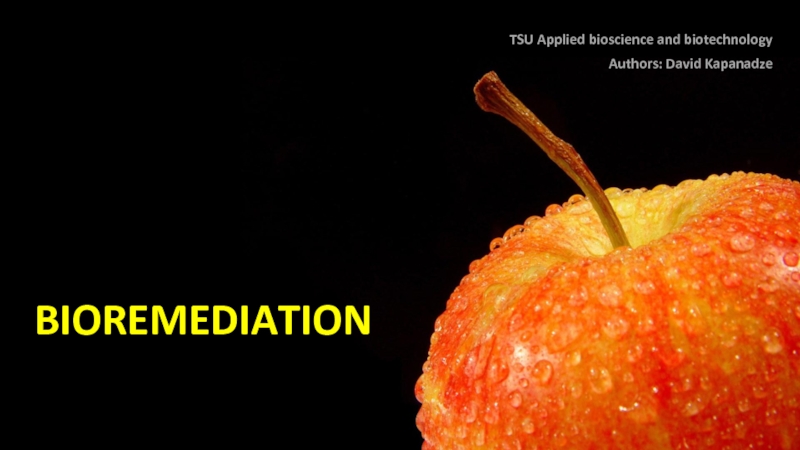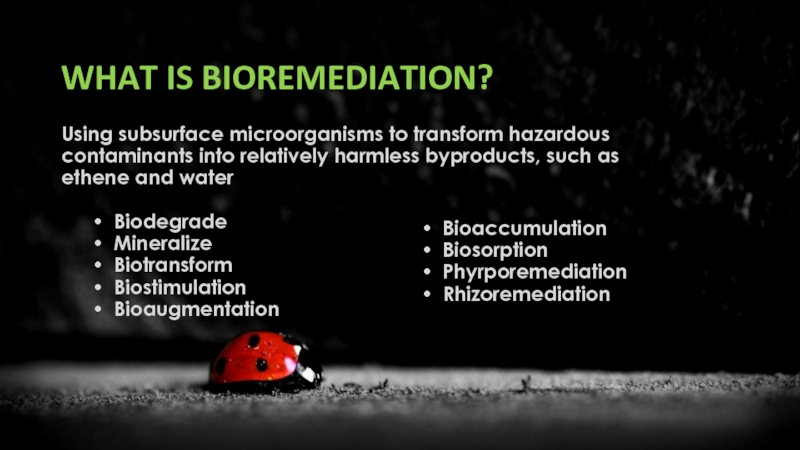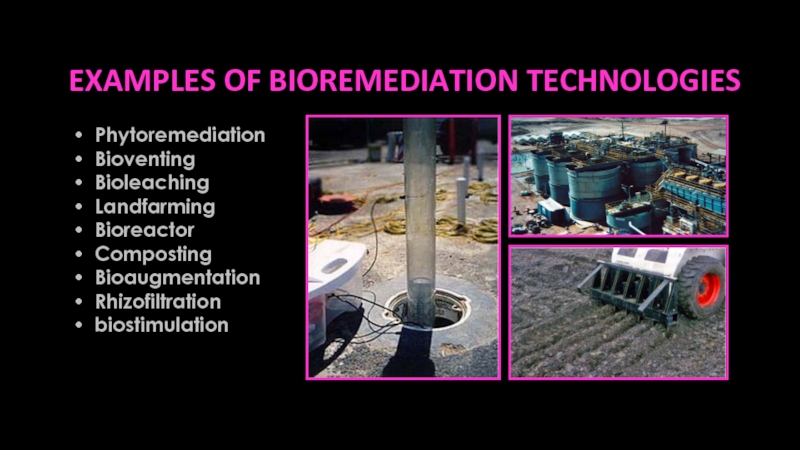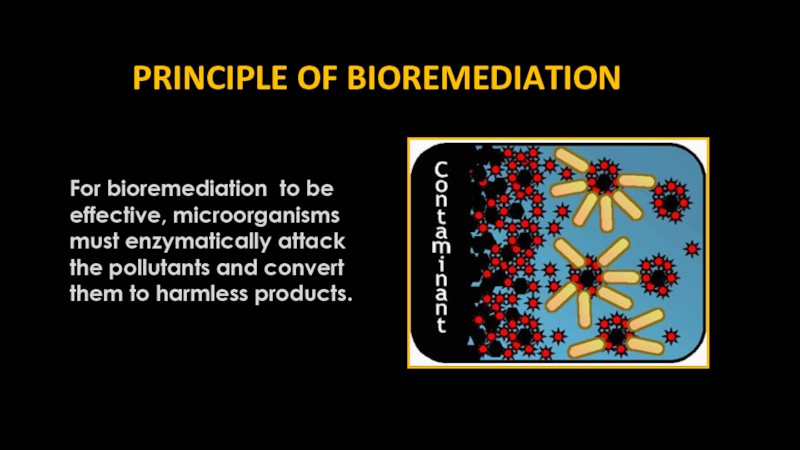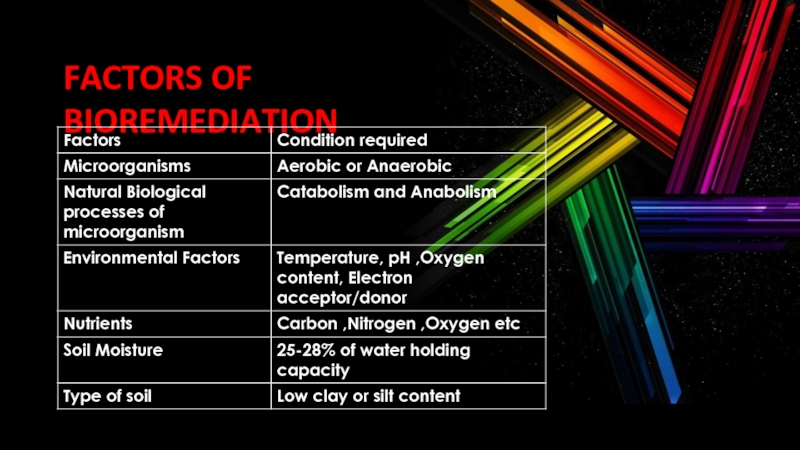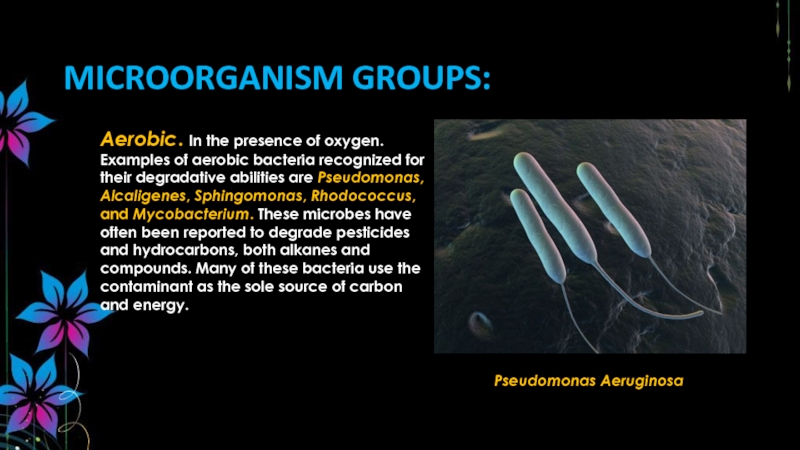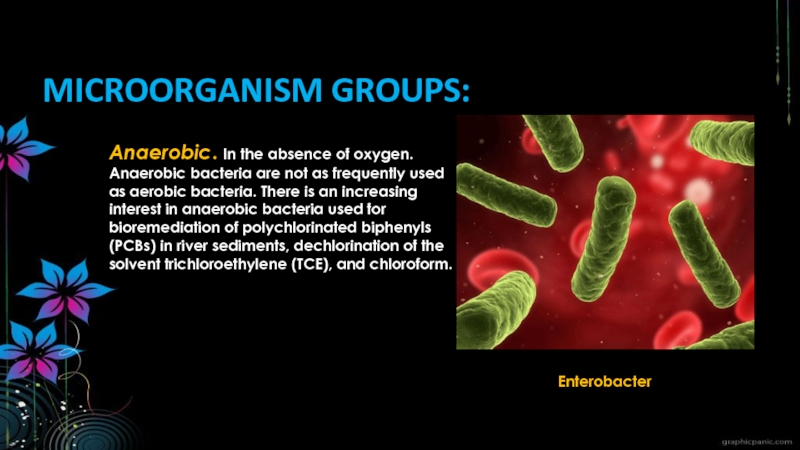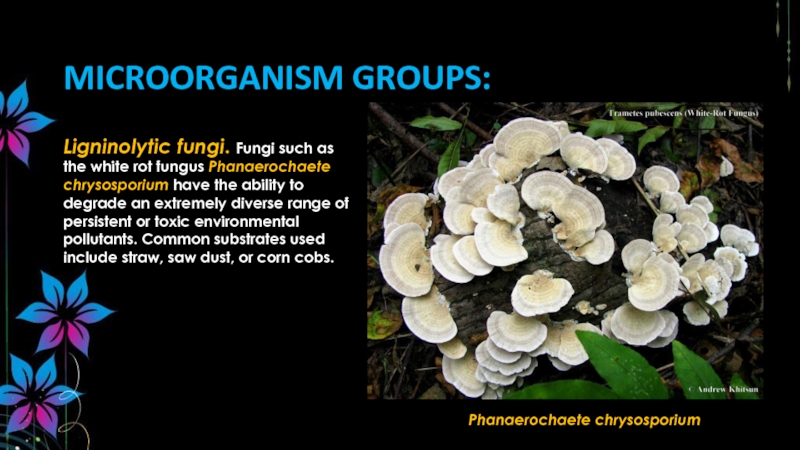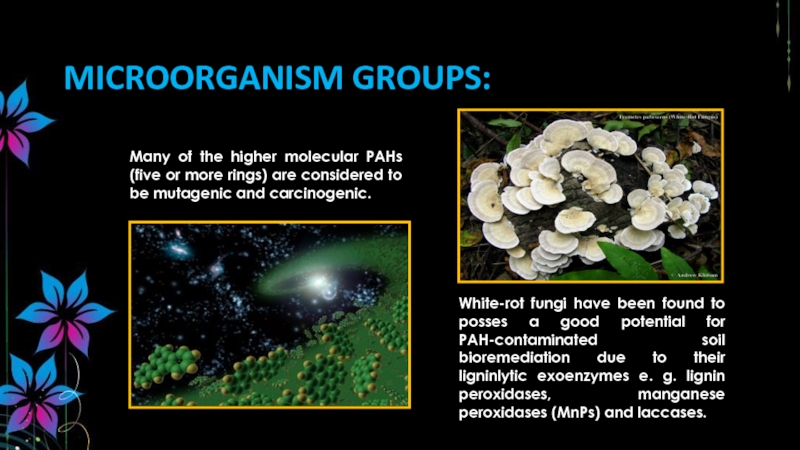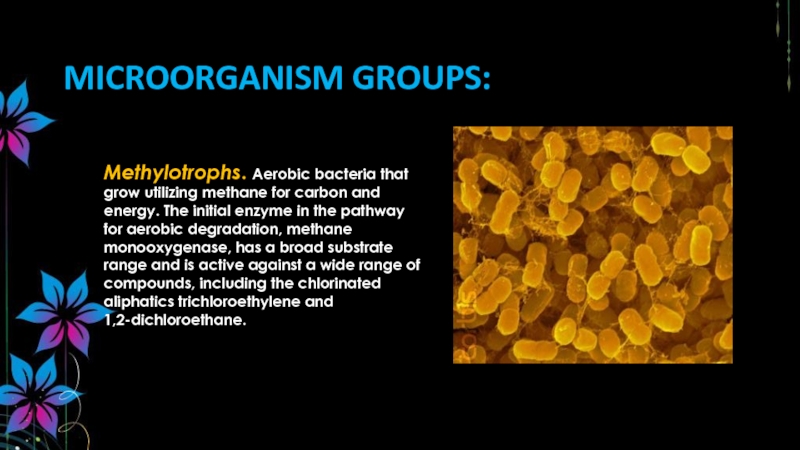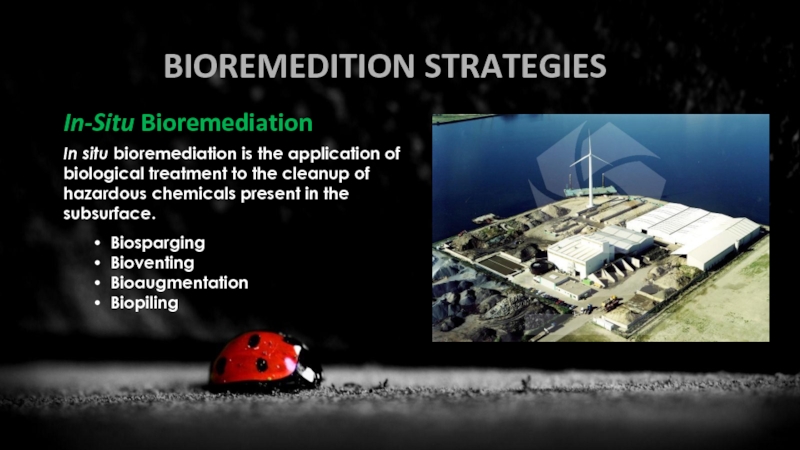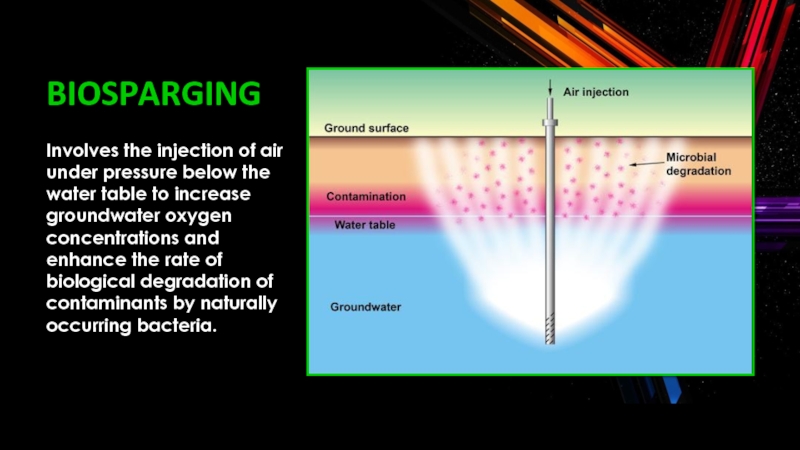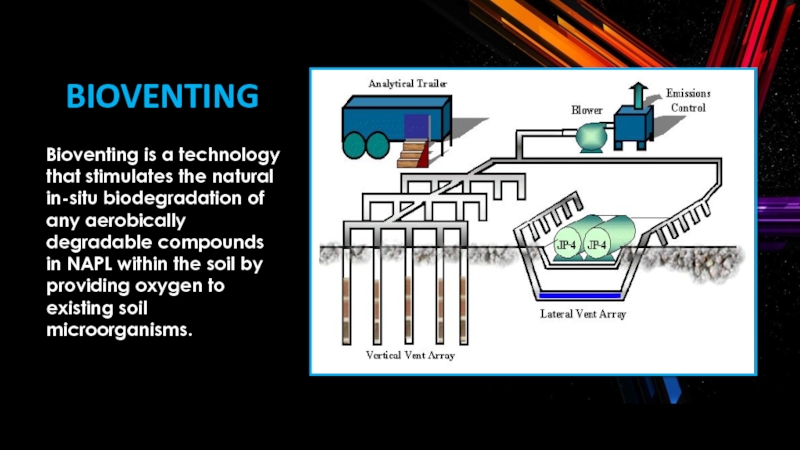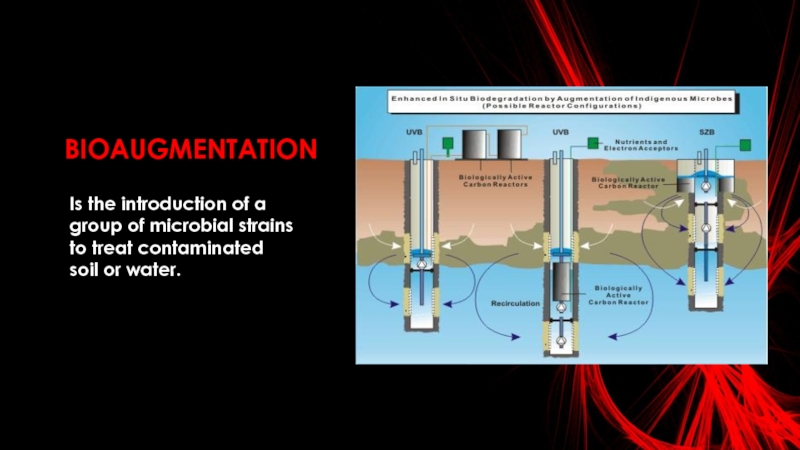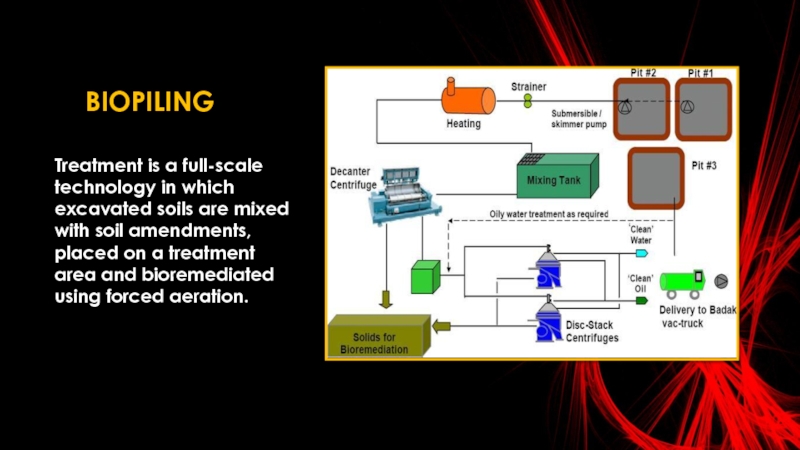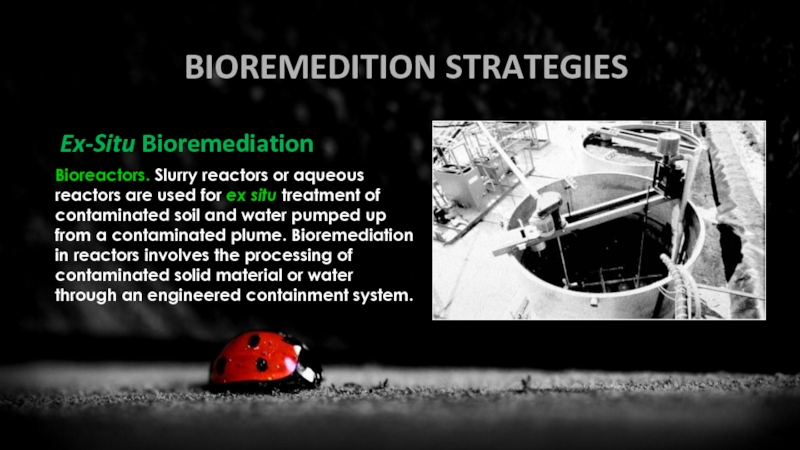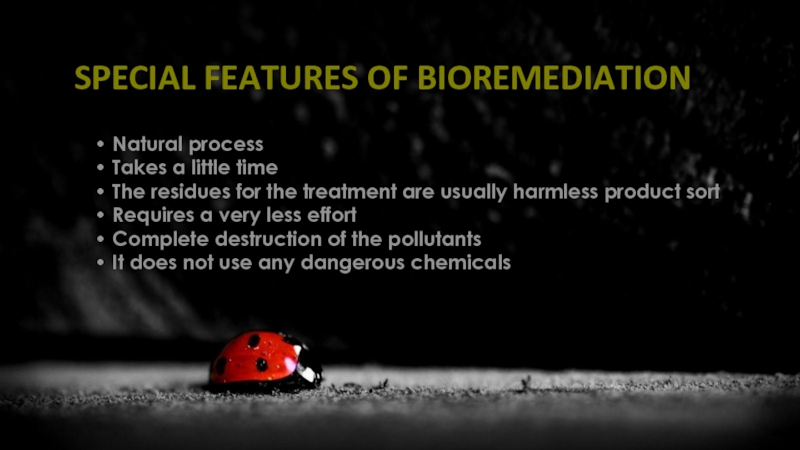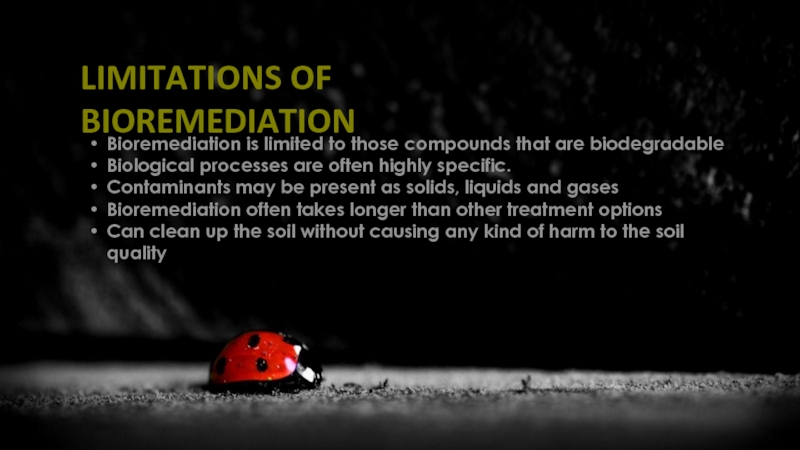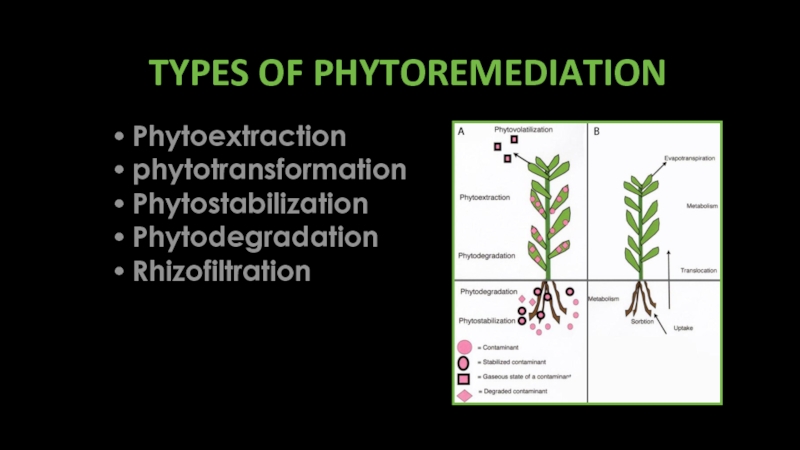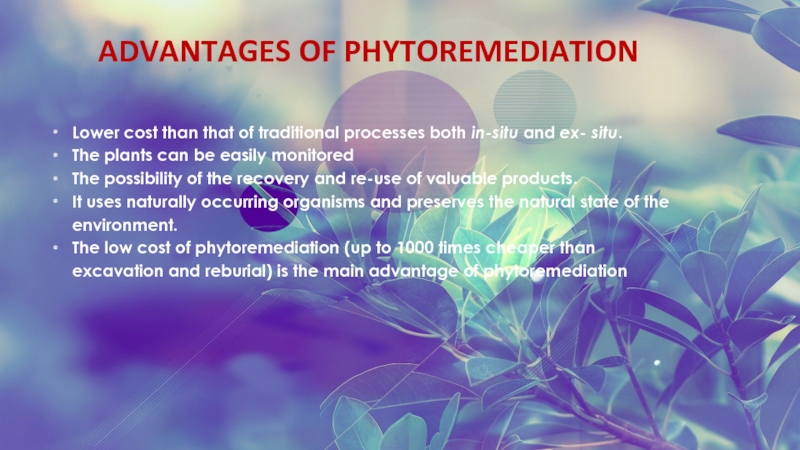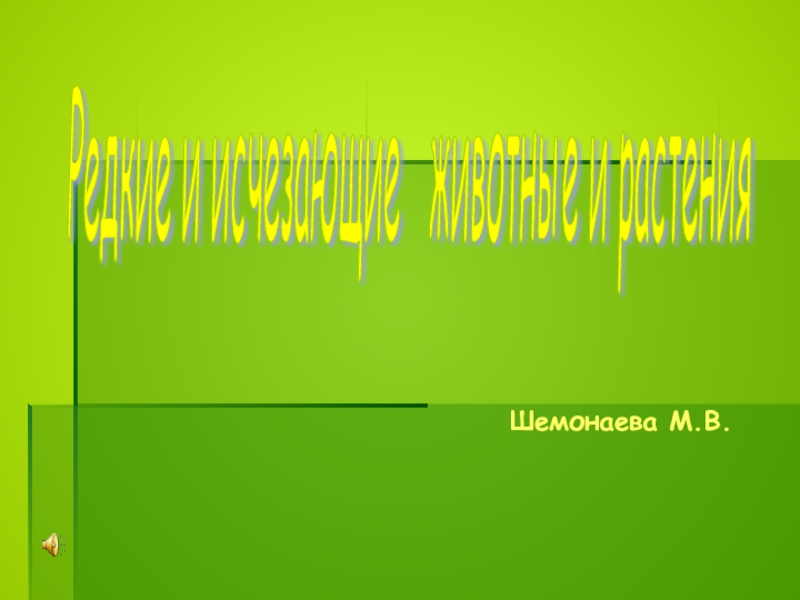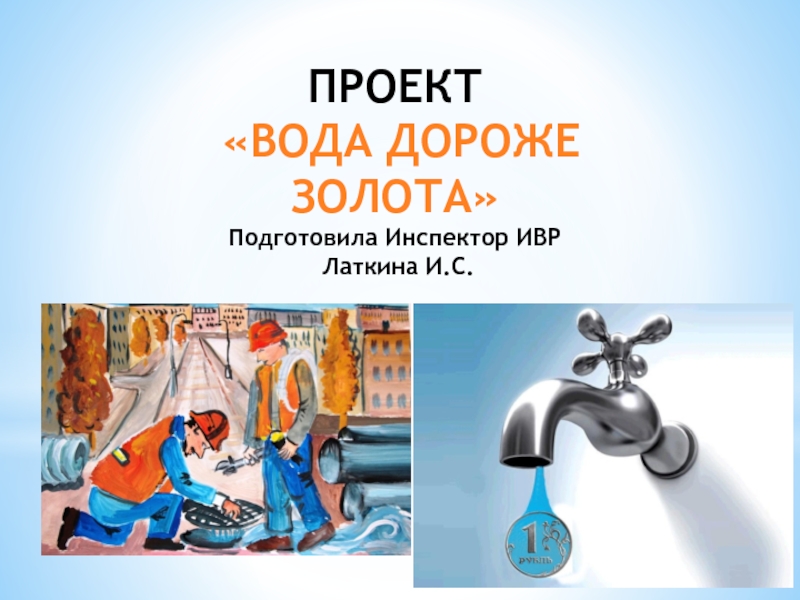BIOREMEDIATION
- Главная
- Разное
- Дизайн
- Бизнес и предпринимательство
- Аналитика
- Образование
- Развлечения
- Красота и здоровье
- Финансы
- Государство
- Путешествия
- Спорт
- Недвижимость
- Армия
- Графика
- Культурология
- Еда и кулинария
- Лингвистика
- Английский язык
- Астрономия
- Алгебра
- Биология
- География
- Детские презентации
- Информатика
- История
- Литература
- Маркетинг
- Математика
- Медицина
- Менеджмент
- Музыка
- МХК
- Немецкий язык
- ОБЖ
- Обществознание
- Окружающий мир
- Педагогика
- Русский язык
- Технология
- Физика
- Философия
- Химия
- Шаблоны, картинки для презентаций
- Экология
- Экономика
- Юриспруденция
Bioremediation презентация
Содержание
- 1. Bioremediation
- 2. WHAT IS BIOREMEDIATION? Using subsurface microorganisms to
- 3. EXAMPLES OF BIOREMEDIATION TECHNOLOGIES Phytoremediation Bioventing Bioleaching Landfarming Bioreactor Composting Bioaugmentation Rhizofiltration biostimulation
- 4. PRINCIPLE OF BIOREMEDIATION For bioremediation to
- 5. FACTORS OF BIOREMEDIATION
- 6. MICROORGANISM GROUPS: Aerobic. In the presence of
- 7. Anaerobic. In the absence of oxygen. Anaerobic
- 8. Ligninolytic fungi. Fungi such as the white
- 9. MICROORGANISM GROUPS: Many of the higher molecular
- 10. Methylotrophs. Aerobic bacteria that grow utilizing methane
- 11. BIOREMEDITION STRATEGIES In-Situ Bioremediation In situ bioremediation
- 12. BIOSPARGING Involves the injection of air under
- 13. BIOVENTING Bioventing is a technology that stimulates
- 14. BIOAUGMENTATION Is the introduction of a group
- 15. BIOPILING Treatment is a full-scale technology in
- 16. BIOREMEDITION STRATEGIES Ex-Situ Bioremediation Bioreactors. Slurry reactors
- 17. SPECIAL FEATURES OF BIOREMEDIATION Natural process Takes
- 18. LIMITATIONS OF BIOREMEDIATION Bioremediation is limited to
- 19. TYPES OF PHYTOREMEDIATION Phytoextraction phytotransformation Phytostabilization Phytodegradation Rhizofiltration
- 20. ADVANTAGES OF PHYTOREMEDIATION Lower cost
- 21. THANKS FOR YOUR
Слайд 2WHAT IS BIOREMEDIATION?
Using subsurface microorganisms to transform hazardous contaminants into relatively
Biodegrade
Mineralize
Biotransform
Biostimulation
Bioaugmentation
Bioaccumulation
Biosorption
Phyrporemediation
Rhizoremediation
Слайд 3EXAMPLES OF BIOREMEDIATION TECHNOLOGIES
Phytoremediation
Bioventing
Bioleaching
Landfarming
Bioreactor
Composting
Bioaugmentation
Rhizofiltration
biostimulation
Слайд 4PRINCIPLE OF BIOREMEDIATION
For bioremediation to be effective, microorganisms must enzymatically attack
Слайд 6MICROORGANISM GROUPS:
Aerobic. In the presence of oxygen. Examples of aerobic bacteria
Pseudomonas Aeruginosa
Слайд 7Anaerobic. In the absence of oxygen. Anaerobic bacteria are not as
MICROORGANISM GROUPS:
Enterobacter
Слайд 8Ligninolytic fungi. Fungi such as the white rot fungus Phanaerochaete chrysosporium
MICROORGANISM GROUPS:
Phanaerochaete chrysosporium
Слайд 9MICROORGANISM GROUPS:
Many of the higher molecular PAHs (five or more rings)
White-rot fungi have been found to posses a good potential for PAH-contaminated soil bioremediation due to their ligninlytic exoenzymes e. g. lignin peroxidases, manganese peroxidases (MnPs) and laccases.
Слайд 10Methylotrophs. Aerobic bacteria that grow utilizing methane for carbon and energy.
MICROORGANISM GROUPS:
Слайд 11BIOREMEDITION STRATEGIES
In-Situ Bioremediation
In situ bioremediation is the application of biological treatment
Biosparging
Bioventing
Bioaugmentation
Biopiling
Слайд 12BIOSPARGING
Involves the injection of air under pressure below the water table
Слайд 13BIOVENTING
Bioventing is a technology that stimulates the natural in-situ biodegradation of
Слайд 14BIOAUGMENTATION
Is the introduction of a group of microbial strains to treat
Слайд 15BIOPILING
Treatment is a full-scale technology in which excavated soils are mixed
Слайд 16BIOREMEDITION STRATEGIES
Ex-Situ Bioremediation
Bioreactors. Slurry reactors or aqueous reactors are used for
Слайд 17SPECIAL FEATURES OF BIOREMEDIATION
Natural process
Takes a little time
The residues for the
Requires a very less effort
Complete destruction of the pollutants
It does not use any dangerous chemicals
Слайд 18LIMITATIONS OF BIOREMEDIATION
Bioremediation is limited to those compounds that are biodegradable
Biological
Contaminants may be present as solids, liquids and gases
Bioremediation often takes longer than other treatment options
Can clean up the soil without causing any kind of harm to the soil quality
Слайд 19 TYPES OF PHYTOREMEDIATION
Phytoextraction
phytotransformation
Phytostabilization
Phytodegradation
Rhizofiltration
Слайд 20 ADVANTAGES OF PHYTOREMEDIATION
Lower cost than that of traditional processes both in-situ
The plants can be easily monitored
The possibility of the recovery and re-use of valuable products.
It uses naturally occurring organisms and preserves the natural state of the environment.
The low cost of phytoremediation (up to 1000 times cheaper than excavation and reburial) is the main advantage of phytoremediation
